on being grounded…
Posted: September 10, 2019 Filed under: activ8, the ash tree | Tags: Arte Povera, ecopsychology, Feeling, Meditation, poetry, Prayer, Ritual, Visual arts Leave a comment  Arrrrgh, Let me OUT!! (pen on envelope on human head) © p ward 2019
Arrrrgh, Let me OUT!! (pen on envelope on human head) © p ward 2019
there are some of us
who are accused
of being ‘grounded’:
perceiving the world and our actions
through a balanced, responsible and rational lens
rooted in practicality and common sense.
but then some of us have also been ‘grounded’ as punishment,
our freedom curtailed by a parent or guardian
for actions that often do not lie within preconceived moral boundaries,
boundaries of balance, responsibility and rationality,
often rooted in practicality and common sense
often according to Nature and her Laws
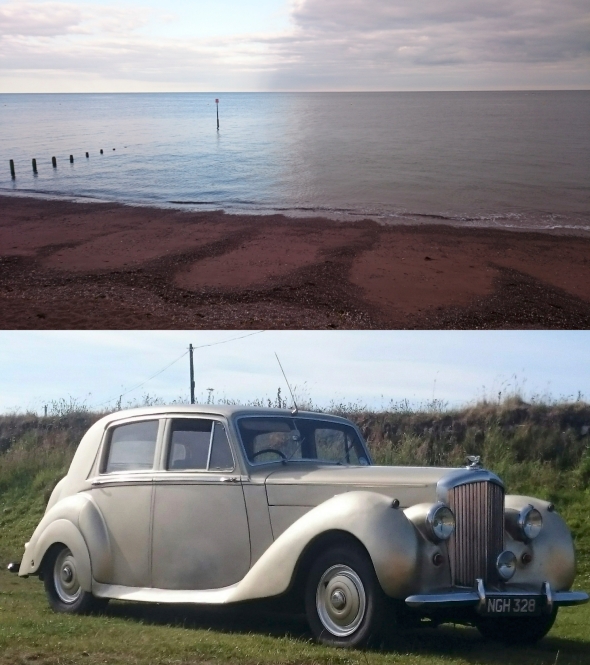 Teignmouth, South Devon; Big Silver Bentley, Gurnard’s Head, Cornwall © p ward 2019
Teignmouth, South Devon; Big Silver Bentley, Gurnard’s Head, Cornwall © p ward 2019
but how we wish to fly
to shed the shackles of good sense
for other and ourselves
in search of learning, perspective and sensual joy
defining new boundaries beyond our knowledge
or otherwise fleeting original experience
before our time is out
in magic
we see
in magic
we live
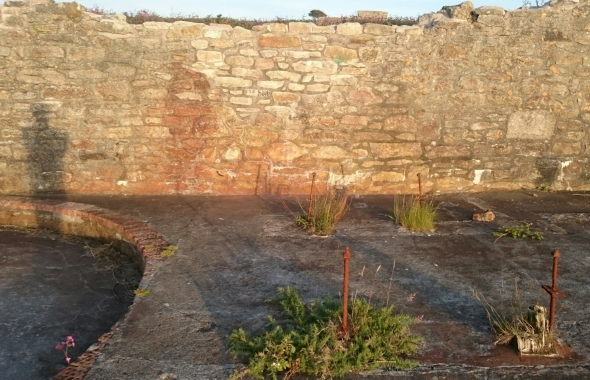 Trease Mine, Boscaswell, Cornwall © p ward 2019
Trease Mine, Boscaswell, Cornwall © p ward 2019
© P Ward 2019
and yet…
Posted: September 10, 2019 Filed under: activ8, the ash tree | Tags: art and science, Arte Povera, climate crisis, climate emergency, eco art, ecopsychology, Feeling, Interdisciplinarity, Meditation, poetry, Prayer Leave a commentthis climate emergency, part 2
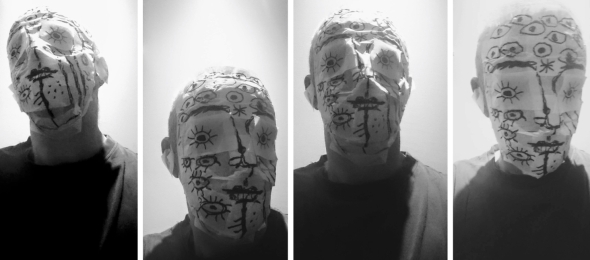 drawing on my face 4: seeing (masking tape and marker pen on human head) © p ward 2019
drawing on my face 4: seeing (masking tape and marker pen on human head) © p ward 2019
and yet,
the sun and moon still rise and fall
birds sing
grass grows
everything is somehow in place.
despite imagery evocative of an abrupt demise,
despite rising popular opinion and attendant fearful frenzy,
despite the corroboration of a high percentage of scientific peers,
despite indicative physical, ideological and pecuniary global suffering and conflict,
despite a lifelong personal acknowledgement of our continuing abuse of Nature…
I do not sense
I do not feel
the end.
I cannot sense
I cannot feel
the end.
I do not, cannot
and will not accept
the end.
so what of instinct and intuition (the antithesis of science)?
what of individual response?
what of collective consciousness?
what of the uninformed, the common man?
are we, en masse, running from the ensuing fire?
and anyway, where can we run in this apparent global catastrophe?
if I do not feel it,
if I stand aside the mindful stampede,
am I simply burying my head in the sand
in denial of empirical objectivity,
in fear of the inevitable?
or is it that
I do not know within my power what more I may do?
as I stand on this excellent brink of oblivion, this ending of sorts,
with the knowledge, wisdom and capability of all I have before
there is opportunity
there is technology
and there is love.
I must either believe in the magic and wonder of the human spirit within Nature or not
like every day
like any day
I breath
I choose
I act according to (my) Nature…
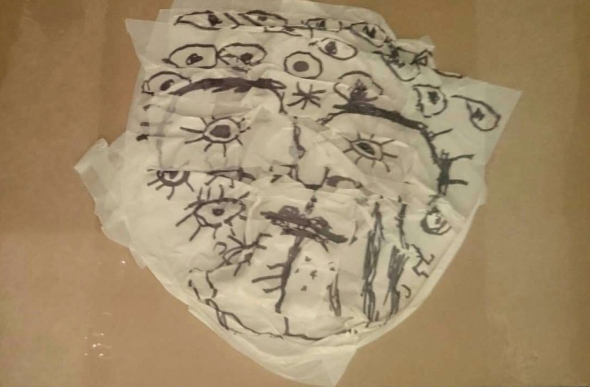 drawing on my face 4: seeing (masking tape and marker pen on human head) © p ward 2019
drawing on my face 4: seeing (masking tape and marker pen on human head) © p ward 2019
© P Ward 2019
it is like being told I am dying
Posted: August 24, 2019 Filed under: activ8, the ash tree | Tags: Arte Povera, arts research, climate crisis, climate emergency, eco art, ecopsychology, extinction rebellion, Feeling, Meditation, poetry, Prayer 3 Commentsthis climate emergency, part 1
in a climate of overwhelming societal and professional expectation as an artist and an earth being i have struggled to know how to meaningfully and effectively respond directly to this ever-present issue. here are some of my thoughts and feelings expressed through words and an ongoing visual project…
it is like being told I am dying
that I am in the final stages of a terminal disease
after a long chronic illness or complaint
and that if I live the way I always should have,
the way I always have,
the way I have always known I should,
the way I have always said we should,
then maybe, maybe, maybe
I will not die.
it is like being told I am dying
but that everyone else and every other life is dying too.
that we are all dying and that it is all our own fault,
well, maybe not allour own fault
but somebody’s fault, some system’s fault, some thought-form’s fault,
that this beauty, this wonder that we experience on a daily basis
will no longer exist (for us)
because of us
it is like being told that everything and everybody that we love
is going to die, to not be.
it is a just like dying,
my experience of dying and death
in normallife –
we are all dying.
we are all going to die.
we are all living with the knowledge that we are all going to die,
that everything and everybody that we love is going to die
and that we shall experience suffering (and joy)
together.
it is still a shock when it comes.
when the reality of our imminent passing becomes apparent.
the utter enormity of it
combined with our inherent inability to conceive of such.
and who are we to talk to
other than those others similarly afflicted and condemned,
others who love and feel and care,
those who are afraid of what might become?
so
how shall we live?
how shall I live?
how shall I end this final sentence?
 drawing on my face – smile (masking tape and marker pen on human head) © p ward 2019
drawing on my face – smile (masking tape and marker pen on human head) © p ward 2019
© P Ward 2019
no light no colour no more
Posted: February 25, 2019 Filed under: eARTh | Tags: Aesthetics, art and science, Arte Povera, Arts, arts research, Cornwall, earth pigments, eco art, ecopsychology, Environmental art, Feeling, indigenous culture, painting, Pigment, Visual arts 2 Commentsfurther material responses to existential emergence, crisis and change
I was reminded recently, while gazing fleetingly into the shimmering turquoise green blue ocean here in West Cornwall, of my early art training based in the classical understanding of colour. colour as light. a systematic mixing together of homogenous materials to represent the colours that we observe in Nature from a set of ‘primaries’: reds, blues and yellows. no black. white in moderation. of hue.
 iron board, Praa Sands, Cornwall (Cornish earth pigments on rock) © p ward 2019
iron board, Praa Sands, Cornwall (Cornish earth pigments on rock) © p ward 2019
our perception of colour, of light and shade, and hence of depth, size, form and materiality, is sometimes explained as the processing and communication of visual information created by the reflection, refraction and absorption of light in relation to materials. working with earth pigments has revealed ‘colour’ as more than just a visual ‘scientific’ process of perception. it is more a holistic appreciation of material presence which encompasses not just colour but texture, smell and a provenance of time and place, of formation and decay, of ecology, history and Nature itself.
we may often associate earth colours with a range of browns, reds and yellows. with this latest set of paintings I have been enjoying a more subtle selection of greys, greens, mauves and whites that I have found, gathered and mixed near my home.
I could say that the stories they tell are unique expressions of their own experience that I have been privileged to bring into contemporary form, but maybe that is for you to decide…
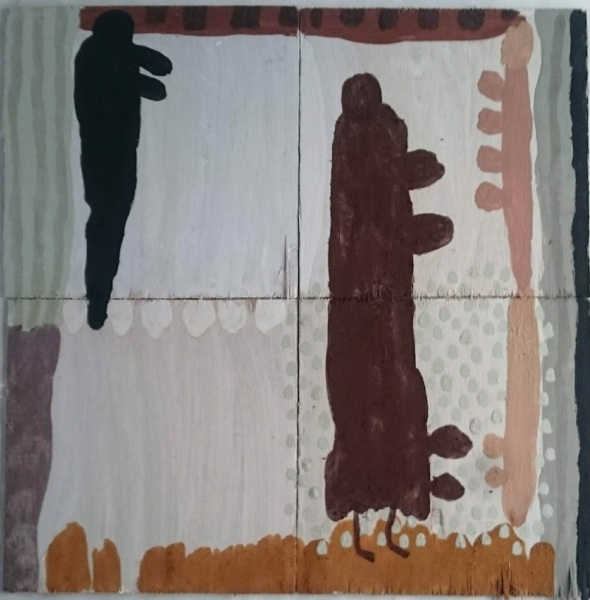 aspects of landscape and love – today it snowed (Cornish earth pigments on board; 51x51cm) © p ward 2019
aspects of landscape and love – today it snowed (Cornish earth pigments on board; 51x51cm) © p ward 2019
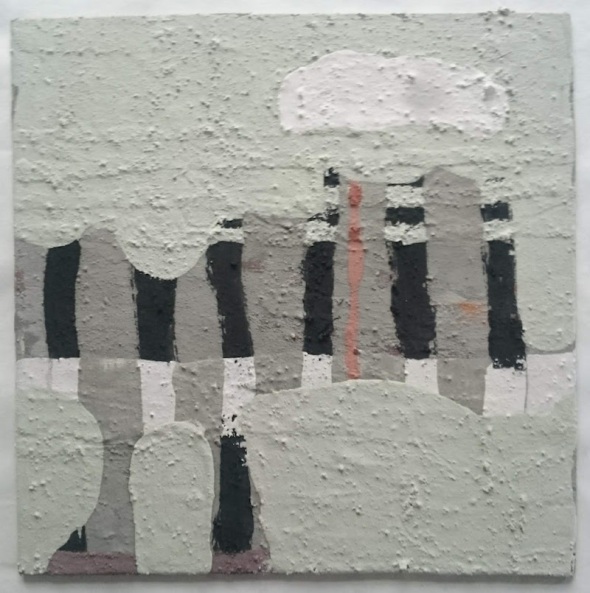 the beautiful things that people say when they are together (Cornish earth pigments on board; 25x25cm) © p ward 2019
the beautiful things that people say when they are together (Cornish earth pigments on board; 25x25cm) © p ward 2019
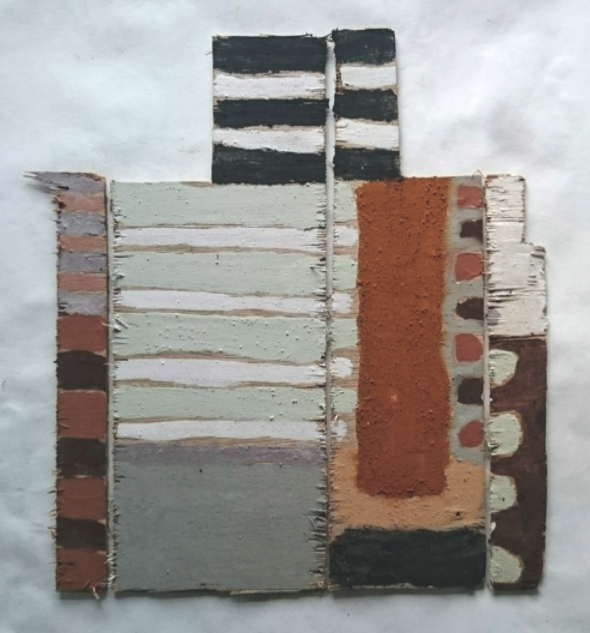 facing up to facing up to (Cornish earth pigments on board; 31x33cm) © p ward 2019
facing up to facing up to (Cornish earth pigments on board; 31x33cm) © p ward 2019
 rearranging the furniture (Cornish earth pigments on board; 35x35cm) © p ward 2019
rearranging the furniture (Cornish earth pigments on board; 35x35cm) © p ward 2019
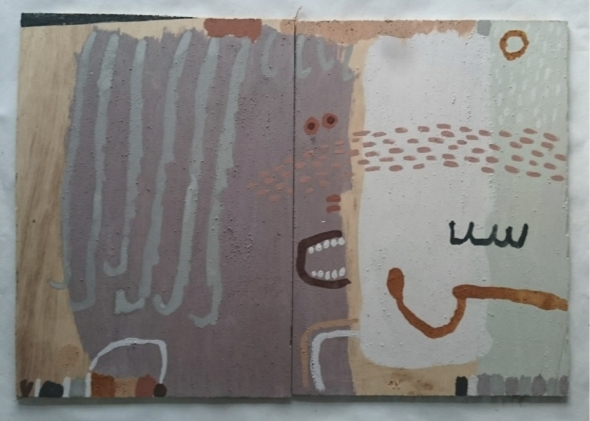 like chopping onions in a northwesterly gale (Cornish earth pigments on board; 56x38cm) © p ward 2019
like chopping onions in a northwesterly gale (Cornish earth pigments on board; 56x38cm) © p ward 2019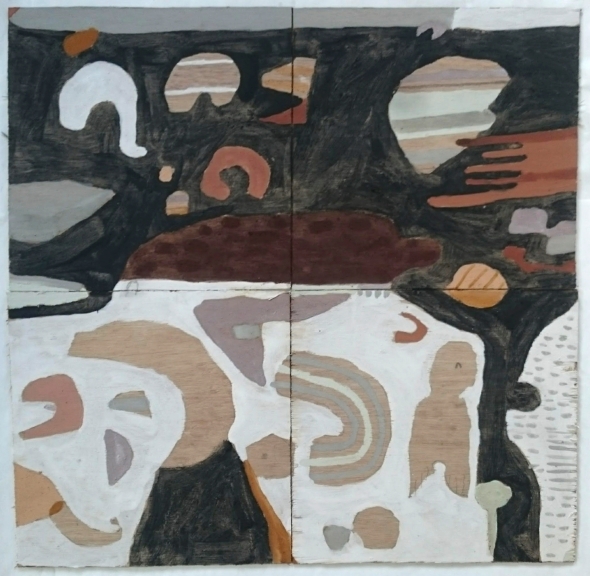 stones that stand in fields with swans and cows and geese: penwith (Cornish earth pigments on board; 70x68cm) © p ward 2019
stones that stand in fields with swans and cows and geese: penwith (Cornish earth pigments on board; 70x68cm) © p ward 2019
 simple communication here (Cornish earth pigments on card; 61x51cm) © p ward 2019
simple communication here (Cornish earth pigments on card; 61x51cm) © p ward 2019
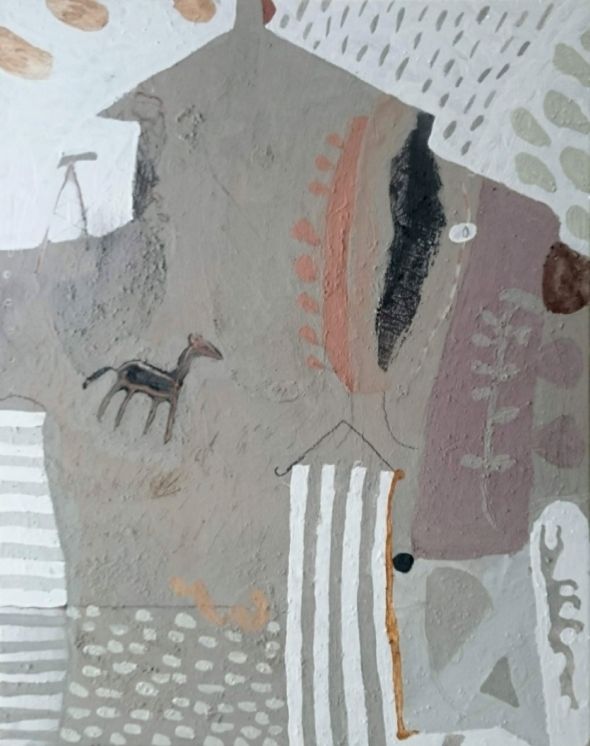 house of power (Cornish earth pigments on canvas; 40x50cm) © p ward 2019
house of power (Cornish earth pigments on canvas; 40x50cm) © p ward 2019
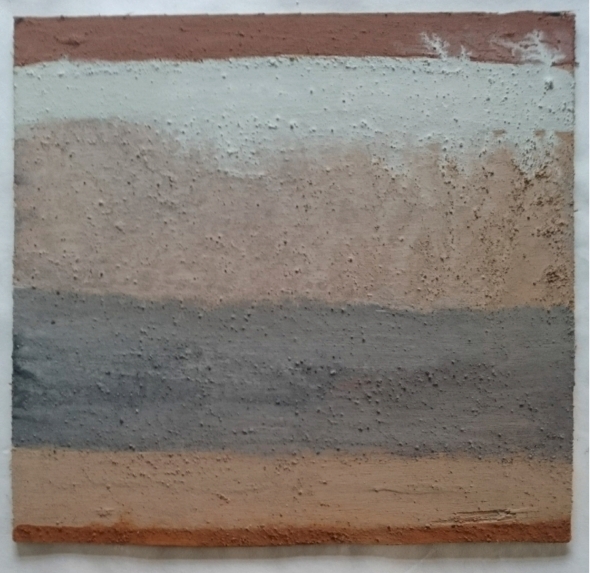 nondescript (Cornish earth pigments on board; 27x26cm) © p ward 2019
nondescript (Cornish earth pigments on board; 27x26cm) © p ward 2019
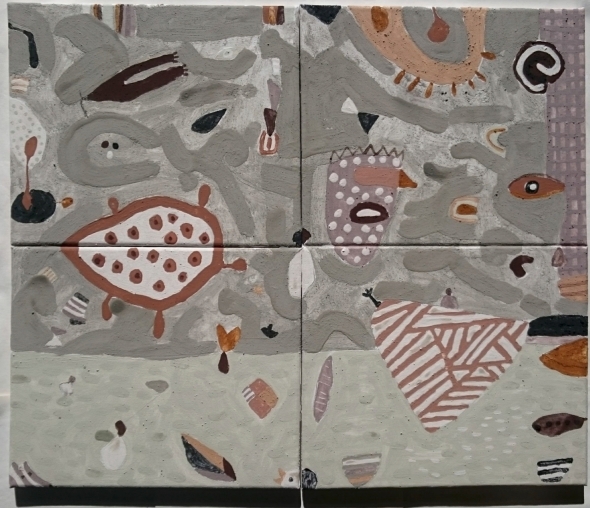 turning a new leaf with foxes on my mind (Cornish earth pigments on canvas; 61x51cm) © p ward 2019
turning a new leaf with foxes on my mind (Cornish earth pigments on canvas; 61x51cm) © p ward 2019
© P Ward 2019
Painting with Earth – Cornwall: new home, new works
Posted: November 30, 2018 Filed under: eARTh | Tags: Arte Povera, Arts, arts research, Cornwall, earth pigments, eco art, ecopsychology, Environmental art, Feeling, indigenous culture, painting, Pigment, poetry, Visual arts Leave a commentNovember 2018
despite the wind
despite the weather
despite the winter
despite the sense of vulnerability
this raw and new found exposure
despite the twisting and turmoil of our times
despite love
and loss
despite it all
this earth still shines
Before I embark on a new phase of experimentation, combining different binders with the Cornish pigments, I would like to share a few paintings that I have made in my new home – a caravan on a dairy farm in the coastal hills of west Penwith, Cornwall.
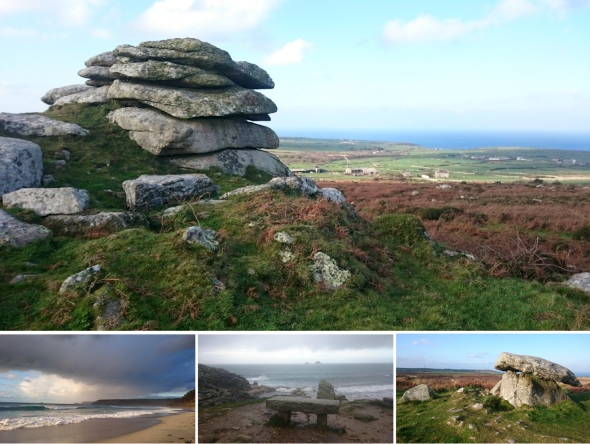 West Penwith, Cornwall – Morvah, Sennen Cove, Cot Valley and Chun Quoit © p ward 2018
West Penwith, Cornwall – Morvah, Sennen Cove, Cot Valley and Chun Quoit © p ward 2018
Here, I am surrounded by the historic land markings of the ancient peoples who populated this extremity of the British Isles. Stone walls, reportedly demarcating some of the oldest working field networks in the world, built 5000 years ago. Iron age hill forts, burial mounds, settlements and wells set in the denuded coastal wasteland of heath and moor. It is at times bleak. After the rain and wind that lashes fresh from the vast Atlantic ocean, the colours of autumn shine. The constantly changing hues of the blue and grey and turquoise sea. Rainbows sitting in our laps. The sky heavy and clear and dark and brooding. Salt water permeating. The animals are exposed by their hunt for food, by the lack of cover afforded by the stripped land. It is a place of spirit and history and life, right now.
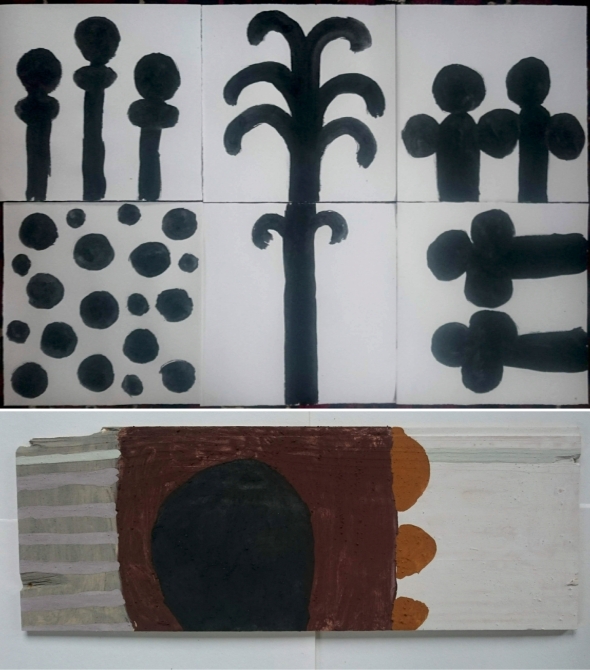 Penwith dream forms (Botallack black on paper); fogou (Cornish earth pigments on wood) © p ward 2018
Penwith dream forms (Botallack black on paper); fogou (Cornish earth pigments on wood) © p ward 2018
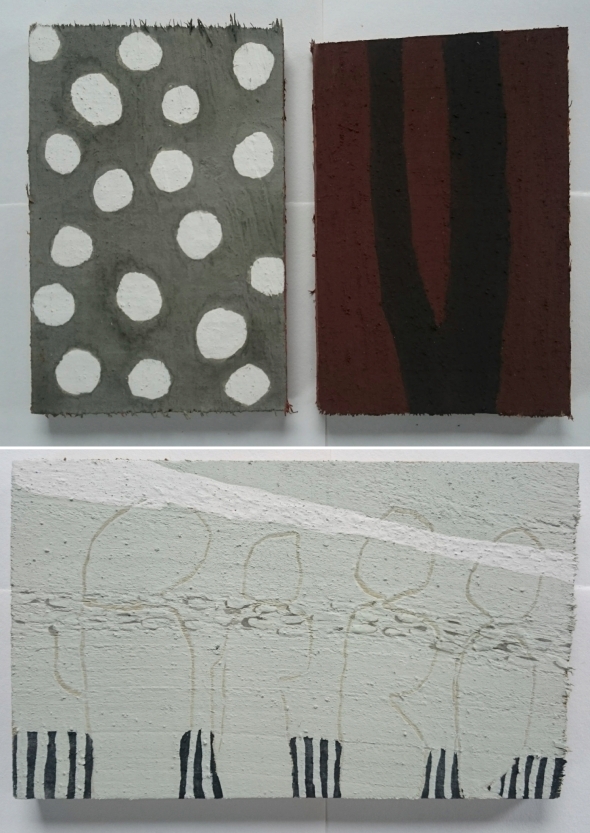 mineral, vegetable; mist (Cornish earth pigments on wood) © p ward 2018
mineral, vegetable; mist (Cornish earth pigments on wood) © p ward 2018
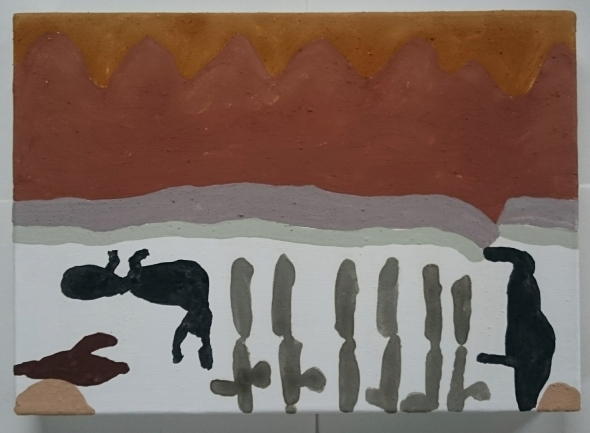 dance on the shore (Cornish earth pigments on canvas) © p ward 2018
dance on the shore (Cornish earth pigments on canvas) © p ward 2018
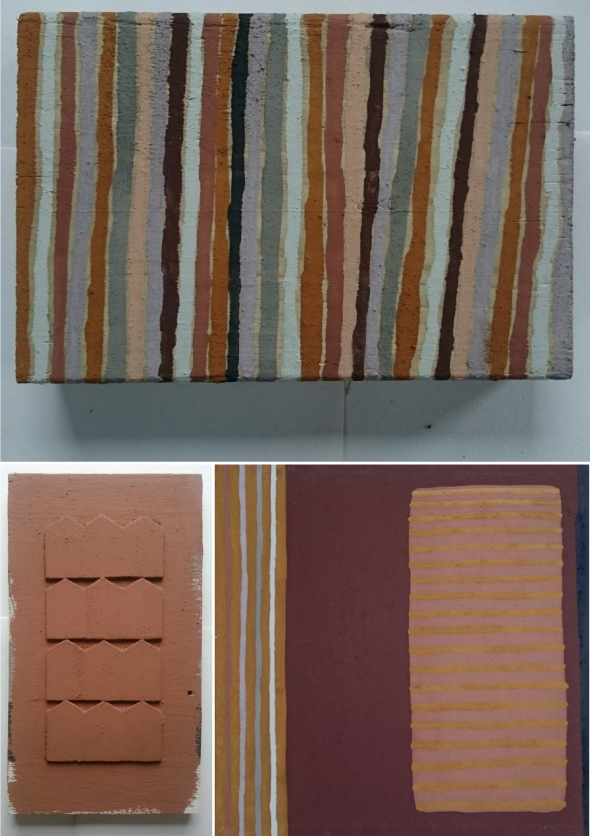 virtually vertical; community (Cornish earth pigments on wood); earth bound (Cornish earth pigments on canvas) © p ward 2018
virtually vertical; community (Cornish earth pigments on wood); earth bound (Cornish earth pigments on canvas) © p ward 2018
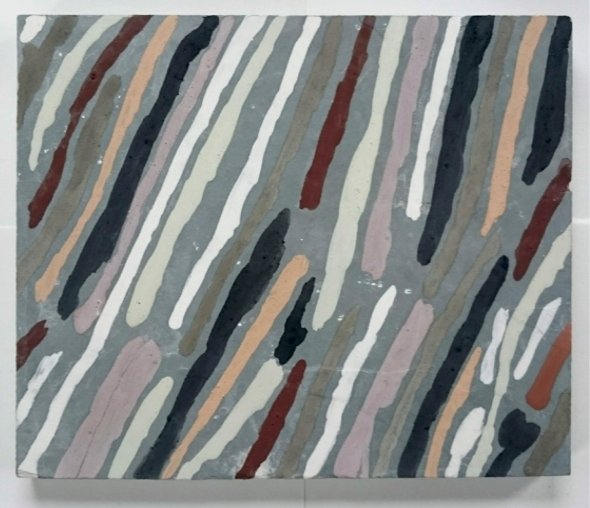 pigment drift (Cornish earth pigments on slate) © p ward 2018
pigment drift (Cornish earth pigments on slate) © p ward 2018
I am slowly learning to listen to the language of the colours here. The earth pigments, their qualities, their sources are unfamiliar. New to me. They are similar in colour to those of North Devon, that I have been using for a long time but very different in other ways. Their formation. Their nature. They have not been part of my own story, until now. The marks and stories they suggest are gradually revealing themselves. Their relationships unfolding. Their dynamic. And despite my attempts at integrity to their provenance and the spirit of this place in which I find myself, it is the freedom of my children’s paintings and drawings that are inspiring me…
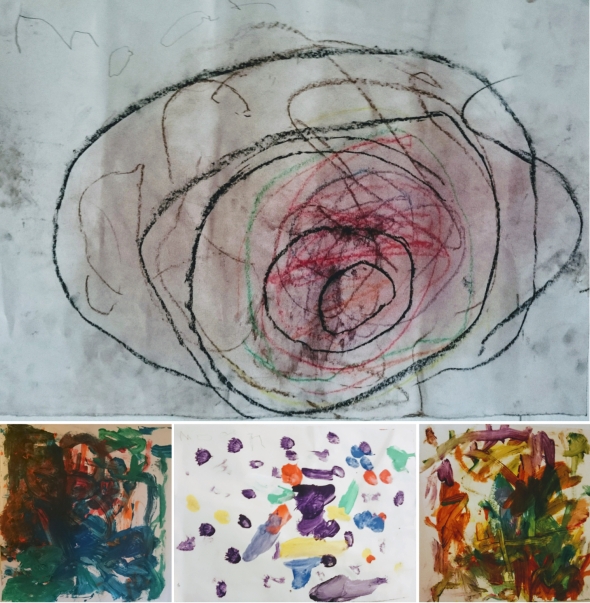 noah, agnes, noah, agnes (pastel and paint on paper) 2018
noah, agnes, noah, agnes (pastel and paint on paper) 2018
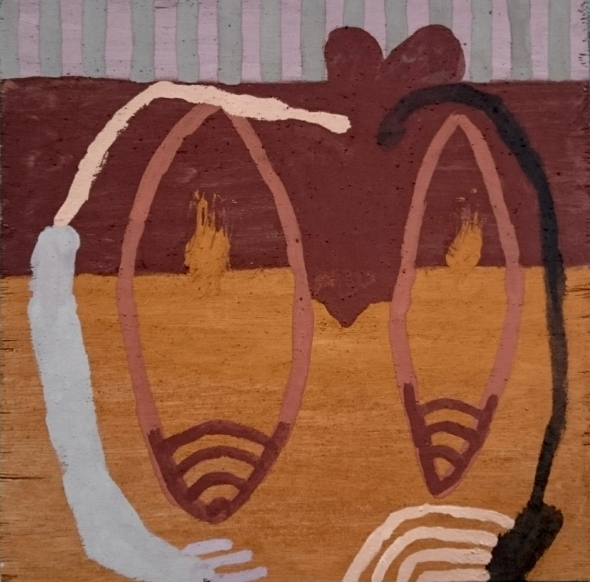 two heads (Cornish earth pigments on wood) © p ward 2018
two heads (Cornish earth pigments on wood) © p ward 2018
 eventual remediation (Cornish earth pigments on wood) © p ward 2018
eventual remediation (Cornish earth pigments on wood) © p ward 2018
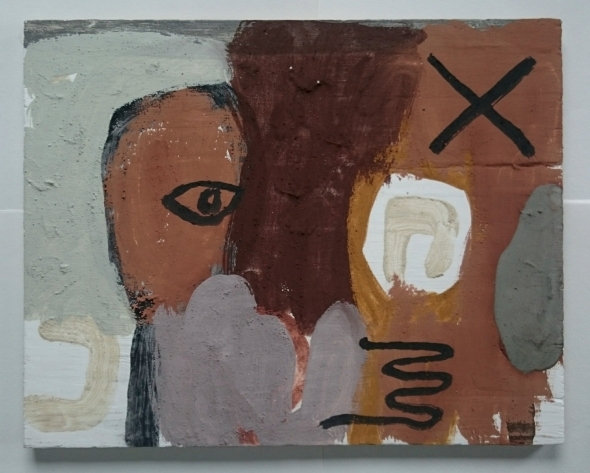 looking for love (Cornish earth pigments on wood) © p ward 2018
looking for love (Cornish earth pigments on wood) © p ward 2018
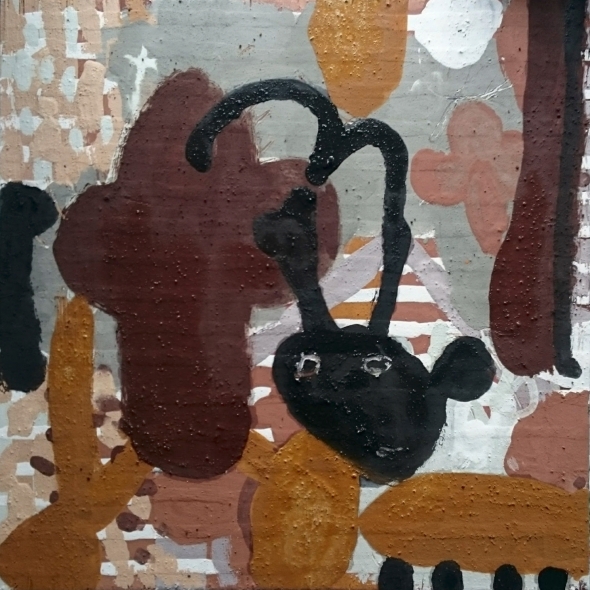 Cornish Folk Tale I (Cornish earth pigments on wood) © p ward 2018
Cornish Folk Tale I (Cornish earth pigments on wood) © p ward 2018
Professionally, I am working on an Arts Council National Lottery Project Fund proposal in association with Geevor Tin Mine to research the creative and educational potential of the pigments. Through recent projects and contact with the staff at the Mine I have started to appreciate and become really excited by the rich historical, geological, chemical and social provenance that the colours carry. After the far-reaching and ongoing success that Painting with Earth – North Devon has brought, let’s hope I will get some real financial support to enable the continuation of this rich seam of work ;-).
© P Ward 2018
burnt CARN
Posted: August 31, 2018 Filed under: A BUNDLE OF STICKS, the ash tree | Tags: arts research, Cornwall, Cornwall Area of Outstanding Beauty, Ecology, ecopsychology, Environmental art, Feeling, poetry Leave a commentPendeen, Cornwall 190818
a howling man dressed in black set fire to the hill (carn) behind Pendeen…
 burnt CARN, Pendeen, Cornwall 190818 I-III © p ward 2018
burnt CARN, Pendeen, Cornwall 190818 I-III © p ward 2018
 burnt CARN, Pendeen, Cornwall 190818 IV-IX © p ward 2018
burnt CARN, Pendeen, Cornwall 190818 IV-IX © p ward 2018
 burnt CARN, Pendeen, Cornwall 190818 X © p ward 2018
burnt CARN, Pendeen, Cornwall 190818 X © p ward 2018
 burnt CARN, Pendeen, Cornwall 190818 XI © p ward 2018
burnt CARN, Pendeen, Cornwall 190818 XI © p ward 2018
it has been a while since I have felt watched,
since I have felt the company of an-other.
the scent of burnt earth
forms distorted by fire
a thick sea mist blowing through the hilltop
silence…
© P Ward 2018
invisible friends
Posted: October 9, 2017 Filed under: activ8, eARTh, the ash tree, Uncategorized | Tags: Arte Povera, arts research, collaboration, ecopsychology, Feeling, poetry Leave a commentmusing upon the muse 91017
.
you warm me
encouraging and invigorating
my muscles, mind and breath
you are so close
yet not here
I long to share a meal, a drink, a show
a long slow walk home
 valerian hapa-zome print © eARTh 2017
valerian hapa-zome print © eARTh 2017
sometimes in life we encounter people
to whom we feel a deep attraction and connection –
a zap between the eyes
an undeniable pull towards,
unwarranted and unthought-of,
an often beautiful but emotionally inconvenient surprise.
 whale shark on my doorstep © p ward 2017
whale shark on my doorstep © p ward 2017
yet circumstances mean our relationships are curtailed
or must take forms different from those we conventionally recognize.
contemporary communications may allow a frustratingly superficial contact,
hand written letters and gifts another, maybe more real,
sometimes even these are not possible
when we honestly crave a wholly physical means –
eye contact and the subtle nuance of body language
the time and space to freely exchange the energetic dynamic
that common interests and diverse histories reveal,
to share a meal, a drink and a long walk home
hands entwined
 dragged through sand, woolacombe bay © p ward 2017
dragged through sand, woolacombe bay © p ward 2017
as an artist, such desire may act as muse:
a light in the darkness, a spark of imagination
exploring the unknown undiscovered spaces,
a chance to meet the familiar through another’s eyes,
or identify and examine new aspects of ourselves –
dreams undreamt , fears as yet unconfronted, renewed aspirations,
detaching oneself from the mundane,
an illusion or delusion
but inspiration all the same;
or fuel to intention
to communicate more wholly
through pathways beyond the visible
 ground earth pigment rings © eARTh 2017
ground earth pigment rings © eARTh 2017
and for those of us who entertain such fantasies about a subtle sense –
who honour a telepathic connection,
like that between a mother and child
or soul-mates
or lovers,
then the distance between may become an ethereal whisper
a breath, a feeling, a warmth, a glow
a longing acceptance of fate
still not manifest
 buoyancy aids and clamped wheel, hele © p ward 2017
buoyancy aids and clamped wheel, hele © p ward 2017
so maybe this is ‘hope’
or merely wishful thinking
a means to find strength and courage in isolation
to believe in another way
in spirit
in love
.
I do
.
(with love and thanks to those who are not here)
© P Ward 2017
coming of age
Posted: July 5, 2017 Filed under: eARTh | Tags: Aesthetics, Arte Povera, arts research, Bideford Black, Earth, earth pigments, eco art, ecopsychology, Environmental art, Feeling, Meditation, North Devon, painting, Pigment, Visual arts Leave a commentmore new paintings (and thoughts about my practice), summer 2017
“I am no longer sure of what I am doing. But then, quite simply, I am painting. I am putting together objects from materials that I gather locally, here in North Devon. Materials that are significant to me. That have stories to tell. That connect me to this place and to my being. The objects created are celebrations of this life. They are explorations. Simple, intuitive journeys of making in the here and now…” (Artist statement, summer 2017)
 burrows (earth pigments on board) © p ward 2017
burrows (earth pigments on board) © p ward 2017
At the tender age of fifty I am finding it harder to define exactly what my artwork is about. In the past I might talk about the power of art as an agent of change but no longer feel this is my main inspiration. Its power is now subtler both within my life and in the world. No longer do I work obsessively, searching for meaning and understanding – indeed my life does not allow it – but see it as a means to share my sense of wonder with the world, through both the materials I use and the approach I take to making. It is a space for myself, to come to terms with life, to find balance and peace. For whatever reason art and making has become a central aspect of my being, like a good friend. Whether this has a positive value to society as a whole I am not sure but in society, art is always there, in whatever form, quietly infiltrating the rigid constructs of our existence.
 sea wall (earth pigments on board) © p ward 2017
sea wall (earth pigments on board) © p ward 2017
However comfortable I may personally feel with my artistic practice I still feel a need (and this is where an issue/dilemma arises) to verbally justify and explain it to others, both for the sake of art historical context and as an aesthetic anchor within the art market – people seem to like to know what they’re buying into. To say that I enjoy mystery or the process seems simply not enough. Intuition is very important to me – to make, to work with the materials, until a piece ‘feels’ ‘right’ is essential to the process.
 particular I-IV (earth pigments on board) © p ward 2017
particular I-IV (earth pigments on board) © p ward 2017
To approach work not necessarily from any literal or narrative starting point, beyond the constraints of my chosen materials, but simply as an act of trust or sense of belief in the creative process and in my simple intent – to share my sense of wonder and beauty in existence. I have been slowly building my own language of marks and forms in response to the process of gathering and making paint with earth pigments. As such I feel the work is a celebration of our connection to place, and the physical matter of place, and our evolving relationship with them.
 offcuts in an offcut frame XI – factual (earth pigments on wood) © p ward 2017
offcuts in an offcut frame XI – factual (earth pigments on wood) © p ward 2017
The titles I enjoy as a poetic response to the work, often with reference to personal experience, and as a means for others to access the work.
 drawing on obscurity XII – surprise party (earth pigments on board) © p ward 2017
drawing on obscurity XII – surprise party (earth pigments on board) © p ward 2017
Politically and spiritually the work I do is significant through its lack of ‘control’, through its trust in simple processes and its respectful empathy with natural materials – it is made in mindful contradiction of the current worldview of human superiority, of ‘power over’, in denial of our supposed ability to know what is the right thing to do – we have already endangered existence through our arrogance, maybe it is time to step back a little before we create more problems. To live simply, in peace with ourselves, with others and all of existence is maybe all we can do…
 standing by the river, beneath the trees, watching rain fall (earth pigments on board) © p ward 2017
standing by the river, beneath the trees, watching rain fall (earth pigments on board) © p ward 2017
 drawing on obscurity XII – if I move slowly enough will I become a tortoise? (earth pigments on driftwood) © p ward 2017
drawing on obscurity XII – if I move slowly enough will I become a tortoise? (earth pigments on driftwood) © p ward 2017
 drawing on obscurity XIII – infiltration (earth pigments on board) © p ward 2017
drawing on obscurity XIII – infiltration (earth pigments on board) © p ward 2017
 tree (earth pigments on board) © p ward 2017
tree (earth pigments on board) © p ward 2017
Infiltration is the process by which water on the ground surface enters the soil. Infiltration rate in soil science is a measure of the rate at which soil is able to absorb rainfall or irrigation. It is measured in inches per hour or millimetres per hour.[i]
© P Ward 2017
________________________________________
[i] https://en.wikipedia.org/wiki/Infiltration_(hydrology)
please accept my resignation 131016
Posted: October 13, 2016 Filed under: activ8, eARTh, educ8, Uncategorized | Tags: Aesthetics, Arte Povera, arts research, Bideford Black, child art, collaboration, Communication, cycling, dance, Devon, Earth, earth pigments, eco art, Ecology, ecopsychology, Environmental art, Feeling, Interdisciplinarity, Nature, North Devon, North Devon Coast, Pigment, Visual arts 4 Comments
some things I have seen, done and made that have made me think, feel and smile over the last few months…
“Reading true literature [Nan Shepherd] reflected, ‘it’s as though you are standing experiencing and suddenly the work is there, bursting out of its own ripeness . . . life has exploded, sticky and rich and smelling oh so good. And . . . that makes the ordinary world magical – that reverberates/illuminates.’ ” taken from Landmarks by Robert Macfarlane.
 folded paper; little family; special gifts; friendship (earth pigments on canvas) © p ward 2016
folded paper; little family; special gifts; friendship (earth pigments on canvas) © p ward 2016
 wooden tray full of found things © eARTh 2016
wooden tray full of found things © eARTh 2016
 ‘the exmoor beast’!?, exmoor zoological gardens © p ward 2016
‘the exmoor beast’!?, exmoor zoological gardens © p ward 2016
 drawing a line, coast to coast with skedge 13916 © eARTh 2016
drawing a line, coast to coast with skedge 13916 © eARTh 2016
 learning to draw I © p ward 2016
learning to draw I © p ward 2016
 learning to draw II, III, IV © eARTh 2016
learning to draw II, III, IV © eARTh 2016
 towan beach, roseland peninsula; bottallack mines, st just, cornwall © p ward 2016
towan beach, roseland peninsula; bottallack mines, st just, cornwall © p ward 2016
 west somerset railway; bicclescombe park shed, ilfracombe © eARTh 2016
west somerset railway; bicclescombe park shed, ilfracombe © eARTh 2016
 painted palette (earth pigments on wood) © eARTh 2016
painted palette (earth pigments on wood) © eARTh 2016
 offcuts in an offcut frame – palette; mask (earth pigments on wood) © p ward 2016
offcuts in an offcut frame – palette; mask (earth pigments on wood) © p ward 2016
 figure; offcuts in an offcut frame – VIII (earth pigments on wood); building blocks © p ward 2016
figure; offcuts in an offcut frame – VIII (earth pigments on wood); building blocks © p ward 2016
with special thanks to francesca, noah, agnes, family and friends for your love, support and companionship 🙂
© p ward/eARTh 2016
home: research, research and inspiration – early 2016 update
Posted: June 15, 2016 Filed under: A BUNDLE OF STICKS, activ8, BIOSPHERic, eARTh, Uncategorized | Tags: art and science, Arte Povera, arts research, collaboration, Devon, Earth, earth pigments, East Devon, eco art, Ecology, ecopsychology, Environmental art, Feeling, indigenous culture, Interdisciplinarity, North Devon, North Devon Coast, Pigment, poetry, Soil Culture 2 Commentswater, air and earth
sticks and stones
and, somewhere, fire
.
as the year unfolds
to a new life
within us
.
and you grow
and hold us rapt
in your emphatic personality
.
we deliberate upon Nature
each delicate
and deafening response
.
there is red and black and grey and green
dirt to some
riches to others
.
grinding away
what is left
to leave
.
more
and more
and more
.
we play
and learn
we play together
.
knees
teeth
home
.
 home: County Clare, Ireland © p ward 2016
home: County Clare, Ireland © p ward 2016
The year began with family and friends in a rainswept County Clare, Ireland, my home for 10 years. Many of the places I wanted to revisit and share were beneath meters of water. Things, of course, had changed for better and worse but the spirit of the land still shone through.
 home: Lake Vyrnwy, Powys, Wales © p ward 2106
home: Lake Vyrnwy, Powys, Wales © p ward 2106
Then more mountains and lakes, family and friends, as my brother’s path shifts to the Welsh borders, an area I have not visited before but will visit again. This time snow, ice, fog and sunshine accompanied my journey. Lake Vyrnwy reservoir submerged a Welsh village to supply England with water.
 home: Ilfracombe, winter 2016 © p ward 2016
home: Ilfracombe, winter 2016 © p ward 2016
And at ‘home’ the winter lashes the coastline, reshaping and reforming. Ilfracombe was originally named after King Alfred and was gifted to two of his sons as a sheltered harbour on the western approaches to his kingdom. Before then an iron-age hill fort overlooked the natural harbour from, what is now, Hillsborough nature reserve. This part of the North Devon coast is formed predominantly from Devonian slates, sandstones and shales and boasts some of the highest sea cliffs in England. We have a new studio here that we hope will provide a base for our creative endeavours and space for others to enjoy.
 home: Barnstaple Bay and Hele, North Devon © p ward 2016
home: Barnstaple Bay and Hele, North Devon © p ward 2016
 home: Holdstone Down, Combe Martin, North Devon © p ward 2016
home: Holdstone Down, Combe Martin, North Devon © p ward 2016
 let’s talk dirt! (White Moose Gallery, CCANW, Heritage Lottery Fund, Bideford Pottery, IGI Ltd, Roger Cockram)
let’s talk dirt! (White Moose Gallery, CCANW, Heritage Lottery Fund, Bideford Pottery, IGI Ltd, Roger Cockram)
In May, as part of the CCANW Soil Culture project, I led a walk and talk with the White Moose Gallery and supported by the Heritage Lottery Fund, to celebrate North Devon’s relationship with its earth resources. “Let’s Walk and Talk Dirt!” involved local potters, Harry Juniper and Roger Cockram, geologists Chris Cornford and Andrew Green, and soil scientist David Hogan to present some different perspectives about our local resources. Participants really enjoyed the interdisciplinary nature of the events but were frustrated by the lack of time to explore the subject matter in more depth. We are now working towards a ‘summer school’ to further explore North Devon’s potteries, pigments, rocks and soils.
 Sidmouth, East Devon © p ward 2106
Sidmouth, East Devon © p ward 2106
 Jacob’s Ladder beach, Sidmouth, East Devon © p ward 2016
Jacob’s Ladder beach, Sidmouth, East Devon © p ward 2016
The Thelma Hulbert Gallery, Honiton, East Devon invited me in May, to run painting with earth workshops to accompany their ongoing Soil Culture exhibitions. The first workshop introduced the ideas to a small group of partially sighted children from the WESC Foundation, providing a space for us to enjoy the more than visual experience of the process and materials. I was also excited to be exploring a new area of the country, encouraging me to find new pigments and learn about their geology and history. The second workshop, for artists, included an invigorating morning field trip to Jacob’s Ladder beach in Sidmouth to gather small quantities of the iron-rich red and green mudstones, and whatever else took our fancy, followed by an afternoon of furious experimentation grinding and binding a selection of pigments with a variety of mediums. It was great to meet some new faces in such a lively and friendly gallery.
 home: Wessex – Branscombe beach, East Devon; Hardy country (chalk and flint) © p ward 2016
home: Wessex – Branscombe beach, East Devon; Hardy country (chalk and flint) © p ward 2016
Something that did surprise me was the presence of chalk in the landscape of East Devon. Having been raised in Portsmouth I am familiar with the chalk and flint of the South Downs and Isle of Wight but wasn’t aware of it so far west along the coast. The sedimentary Cretaceous beds at Beer, that I saw from Branscombe beach during a day of research, lie above Upper Greensand that then rests on the more familiar Mercian Triassic red mudstones of South Devon. Apparently there is an ‘unconformity’ here in that the interceding Jurassic layer is missing, the area being land during that era. The nodules of flint and chert present in the Chalk and Upper Greensand that make up the beaches are also apparent in the local architecture creating further similarities to the South Downs and other Chalk areas across Europe.
One such region, that I also feel an affinity with through my ancestry and boyhood cycling adventures, is the Wessex Downs. The ancient country of Wessex encompassed Hampshire, west to the Cornish borders, and Wiltshire, Dorset, Devon and Somerset. In more recent times its character and characters have formed the backdrop for the literary works of Thomas Hardy. I was recently contacted by a research fellow from Exeter University to collaborate in a project to explore the value to health and well being of arts-based environmental workshops. His previous research looked at the work of Thomas Hardy in relation to the Wessex landscape. We are now waiting to see if our initial funding application has been successful before embarking on a major AHRC project around a similar theme. It has been fascinating working with a complete stranger towards a shared goal.
 Hele community group sculpture proposal sketches © eARTh 2016
Hele community group sculpture proposal sketches © eARTh 2016
Meanwhile, closer to home again we have been working with the local community towards re-landscaping an unsightly patch of ground behind the bus shelter in our village. It was good to be invited, to meet some more of our neighbours, to learn about the history of the village and to think how to we might alter such a space to celebrate the area. It was recently discovered that the area is owned (rather than it being public space) which has put the project back somewhat!?
 sketches in wood and stone © p ward 2016
sketches in wood and stone © p ward 2016
And back in the studio I have been enjoying putting together some new work (see previous post) using old offcuts of wood, old pots of paint and some new pigments. After 9 months I finally feel like I am settling in, enjoying the space and making something new, as well as finding time for my other interests and beautiful family. With a new arrival imminent we’ll be working hard to keep it up…
 jacob’s ladder, earth pigments on canvas © p ward 2016
jacob’s ladder, earth pigments on canvas © p ward 2016
 corn mill close, masonry paint on painted board © p ward 2016
corn mill close, masonry paint on painted board © p ward 2016
 offcuts – sketch in wood © p ward 2016
offcuts – sketch in wood © p ward 2016
© P Ward 2016



